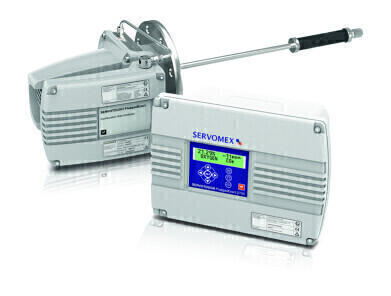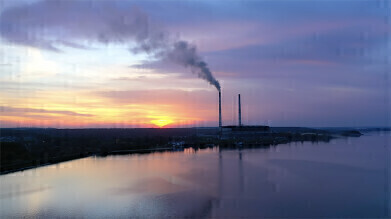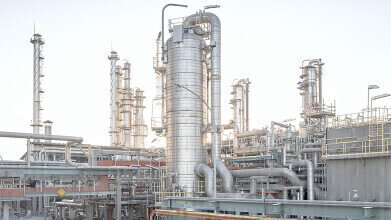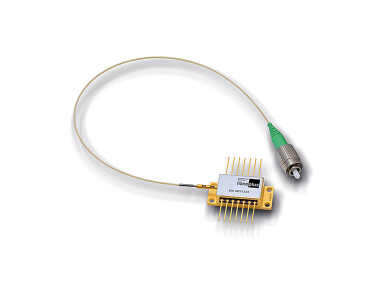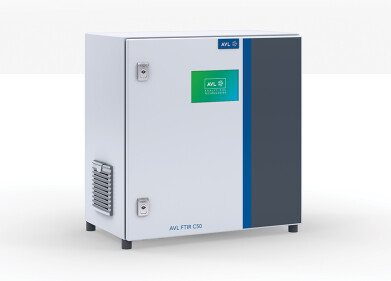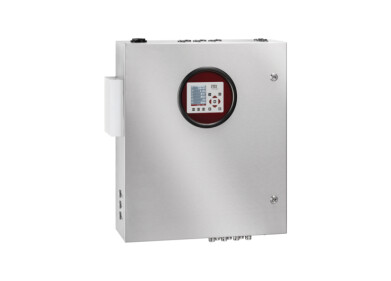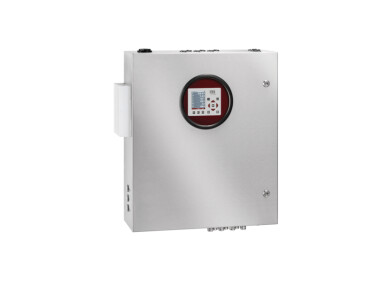Gas analyser
Sustainable gas analysis solutions for decarbonisation processes
Feb 21 2023
Many industries are searching for ways to minimise the environmental impact of their operations as global pressure grows to reduce and prevent harmful emissions, particularly of carbon dioxide (CO2).
In response to this pressure, and ever more stringent environmental regulations, industrial operators are increasingly adopting clean air and decarbonisation strategies designed to meet regulatory requirements and help them achieve carbon reduction targets.
These efforts are significantly bolstered by accurate and reliable gas analysis, which not only supports the measurement of harmful emissions, but also helps to improve process efficiency, ensuring fewer emissions are generated from the outset.
As the global expert in gas analysis, with a proven track record in sustainable operations, Servomex plays a major role in helping a wide range of industries achieve their clean air goals. Using a three-phase strategy, it focuses on the key process areas, working to reduce emissions and mitigate the damage caused by harmful pollutants.
Addressing these three areas – combustion efficiency, gas clean-up, and emissions monitoring – not only helps ensure cleaner air, but also optimizes processes to deliver reduced fuel consumption and higher yields.
How to improve combustion efficiency with gas analysis
In the combustion reaction, fuel is mixed with oxygen (usually from air) in a fired heater, creating heat energy for use in the process. This reaction typically consumes a significant amount of fuel, creates potential safety hazards, and generates harmful emissions.
Gas analyser technology allows the accurate measurement of oxygen and combustibles – principally carbon monoxide (CO) – during combustion, so the air-to-fuel ratio can be balanced for a more efficient reaction.
Controlling combustion efficiency reduces emissions of key pollutants, including NOx, SOx, carbon monoxide (CO), and carbon dioxide (CO2), lowers fuel consumption, and improves safety.
Zirconia-based sensing technology is the long-established solution for O2 monitoring in combustion and can be easily paired with a combustibles sensor for an all-in-one combustion control solution – as, for example, in Servomex’s SERVOTOUGH FluegasExact 2700 combustion analyser.
A newer technology for this application is Tunable Diode Laser (TDL) sensing, which delivers an even faster measurement than conventional techniques. This non-contact sensing gives an average path measurement across the heater and is highly specific to the gas being measured.
Servomex’s SERVOTOUGH Laser 3 Plus Combustion TDL analyser can be configured to measure either O2 or CO. It can also be set for a joint measurement of CO and CH4, providing a rapid-response measurement for safety in natural gas-fired heaters and boilers to detect CH4 breakthrough during burner flame-out conditions.
Precise ammonia and sulphur dioxide analysis for gas cleaning applications
This phase involves the safe removal of harmful substances from process gases that might otherwise be emitted by the plant. Typical applications within this phase include DeNOx treatments (i.e., selective catalytic and selective non-catalytic reduction processes) and flue gas desulfurization. A variety of gas measurements are required depending on the gas cleaning process being used.
For example, in DeNOx systems, ammonia (NH3) or urea is used to suppress harmful NOx emissions created by combustion. A TDL analyser installed directly into the process ducts to measure ammonia “slip”, is the most effective analysis solution.
This provides a highly sensitive, average measurement across the duct, so the NH3 reading is accurate even when flow conditions are inconsistent. Servomex’s solution for this application is the SERVOTOUGH Laser 3 Plus Environmental, which is configured to measure NH3.
As a further example, flue gas desulphurisation systems remove sulphur compounds (mainly SO2) from exhaust gases – this process is often used by fossil-fuel power plants and waste incinerators.
Measuring the SO2 content before and after treatment ensures that any remaining sulphur compounds fall within regulatory limits, and allows dosing to be accurately controlled.
Servomex’s SERVOPRO 4900 Multigas uses Infrared Gas Filter Correlation (GFC) technology to measure SO2 in real-time to very low levels in this application, and can also support sulphur recovery units, which recover sulphur from streams containing H2S.
Multi-component gas analysis for emissions monitoring
Measuring pollutants within the flue gas helps to determine process efficiency and protect the environment. It also ensures that plant operators are compliant with the necessary regulations. Continuous monitoring is required to measure the necessary components of the flue gas, including criterion pollutants and greenhouse gases.
Multi-component gas analysers such as the 4900 Multigas can, depending on the process, either deliver all the necessary measurements in one device or form a key part of an integrated, comprehensive continuous emissions monitoring system (CEMS).
For example, a single 4900 Multigas can monitor four gases simultaneously, measuring from a choice of O2, CO2, CO, SO2, NO, CH4, and nitrous oxide (N2O). It also meets MCERTS and QAL1 certifications for compliance with regulatory criteria.
Gas analysis – a key component of efficient carbon capture
A key part of many decarbonisation strategies, carbon capture and storage (CCS) technologies are used to collect CO2 emissions from power plants and heavy industry, transporting them by pipeline or ship for underground storage.
Carbon capture and usage (CCU) utilises captured CO2 to manufacture fuels, carbonates, polymers, and other chemicals, contributing to a circular economy.
CCS and CCU both aim to reduce the amount of CO2 that enters the atmosphere. However, CO2 emissions greatly exceed the expectations of CO2 usage currently, so CCU is regarded only as a complementary alternative to CCS.
These processes can be categorised by the method and placement of the carbon capture technology, which falls into three main types: pre-combustion capture, oxyfuel combustion, and post-combustion capture.
Regardless of the method used, gas analysis is vital for effective and efficient carbon capture, delivering important measurements for emissions monitoring, safety, quality, and process control.
Servomex’s SERVOPRO 4900 Multigas extractive analyser meets most CEMS requirements for flue gas measurements of CO2, CO, NOx, O2, and SO2, while the SERVOTOUGH SpectraExact 2500 photometric gas analyser is a key solution for measuring CO2 purity and trace contaminants in CO2. It can measure CO, SO2, and, depending on the range, H2O.
Other solutions include the SERVOPRO MultiExact 4100 multi-gas analyser, for trace CO2 and O2, the 4900 Multigas for trace SO2, and the SERVOPRO MonoExact DF310E for trace O2 and H2O.
Monitoring oxyfuel combustion efficiency – for example, with the SERVOTOUGH FluegasExact 2700 – also helps to reduce emissions and fuel costs and increases safety.
Gas analysis with a proven record in sustainability
Servomex’s proud record as a sustainable business is supported by the award of the EcoVadis Gold Rating 2022 for its business sustainability ratings.
This accreditation measures Servomex’s environmental, social, and ethical performance, enhancing the company’s reputation for sustainability and instilling greater confidence in customers looking for a sustainable supplier.
EcoVadis is a leading assessment platform for supplier sustainability ratings and provides insight into a supplier’s Corporate Social Responsibility performance, leading to improvements.
Strengths identified for Servomex included its environmental emergency measures in place, specialised treatment and safe disposal of hazardous substances, and communication progression towards the Sustainable Development Goals.
This means that industrial operators using Servomex’s gas analysis solutions can not only be assured of best-fit gas analysis technologies for their clean air and carbon capture processes; they can also be confident that they are working with a supplier that understands sustainability and is committed to supporting sustainable business practices.
Digital Edition
AET 28.4 Oct/Nov 2024
November 2024
Gas Detection - Go from lagging to leading: why investment in gas detection makes sense Air Monitoring - Swirl and vortex meters will aid green hydrogen production - Beyond the Stack: Emi...
View all digital editions
Events
Jan 12 2025 Abu Dhabi, UAE
Jan 14 2025 Abu Dhabi, UAE
Jan 20 2025 San Diego, CA, USA
Carrefour des Gestions Locales de L'eau
Jan 22 2025 Rennes, France
Safety, Health & Wellbeing LIVE
Jan 22 2025 Manchester, UK
